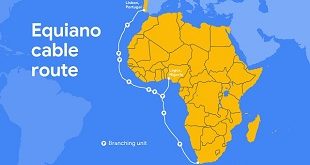
Washington, United States | AFP | Secretary of State Rex Tillerson says diplomacy has failed and military action against nuclear-armed North Korea is an “option on the table,” and President Donald Trump insists a long-range nuke from Pyongyang “won’t happen.”
While war with North Korea may be unlikely for now, Pentagon planners and private analysts have given deep thought to how US military intervention with the reclusive country would play out.
Hint: There are no easy options, and the risks are enormous.
– Surgical vs. all-in –
Preemptive military action against North Korea would mean the United States and its allies won’t wait until a North Korean nuclear ballistic missile is launched, even though dense defense networks could likely shoot one down.
So first question would be whether to go all in — a la Iraq — and push for regime change, or whether to limit intervention to surgical strikes on nuclear program targets.
Stratfor, a US private intelligence firm that recently published a paper looking at possible Pentagon options, said Washington does not want a long-term intervention in North Korea, meaning “levels of violence would be limited.”
A broader military campaign would risk full-scale war, and Pyongyang would inevitably be forewarned, making it more likely it would carry out its own preemptive strikes.
Bruce Klingner, who formerly worked for the CIA and now specializes in Korean and Japanese affairs for the Heritage Foundation think tank, warned that any preemptive allied strikes or missile shoot-downs should only occur in the event of an imminent North Korean attack.
– War hardware –
The United States has an “ironclad” alliance with South Korea and has stationed thousands of troops there since the end of the Korean War, with about 28,000 currently based in the South.
The two countries are also currently running joint military drills called the Foal Eagle exercises.
A strike on the North would likely come via US stealth bombers, which can penetrate deep into enemy territory without leaving a significant radar trail.
While North Korea has good air defenses, these would be no match for stealth planes like the B-2 bomber, the F-22 fighter and, eventually, the F-35.
America also has ships and submarines in the region, so firing cruise missiles from unexpected locations is also an option.
– What to strike –
B-2 stealth bombers carrying Massive Ordnance Penetrator bombs and other armaments could easily incapacitate North Korea’s known nuclear production sites and weapons storage facilities.
Stratfor says an initial wave of bombing could be followed up by a massive barrage of F-22 strikes and cruise missiles that would focus on wiping out North Korea’s weapons delivery vehicles.
Pyongyang has about 200 of the so-called Transporter Erector Launchers (TELs) dotted around the country.
But destroying Pyongyang’s obvious military targets does little to prevent North Korea delivering a nuclear device through other means — perhaps via a civilian fishing boat — that would be detonated by a suicide operative.
– The North’s response –
Leader Kim Jong-Un is well aware he has limited — but powerful — options when it comes to retaliation.
An all-out attack on South Korea, Japan and US military bases would most likely bring about a massive international response and hasten the end of his regime.
But even a limited response would be devastating.
North Korea has amassed artillery units along its border with South Korea.
The capital, Seoul, is only about 35 miles (55 kilometers) away and some of the canons could rain shells onto the city of 10 million.
Even limited shelling and rocket fire would likely lead to mass casualties.
But that would end badly for the North, said Stratfor analyst Sim Tack, who co-authored the report.
It would put “the United States and its allies into a position where they have no choice but to come in and try and destroy the entire military capability of North Korea,” Tack told AFP.
– Unknowns –
Stratfor warns the US and its allies lack perfect intelligence on North Korea, so they would not be certain they had destroyed all nuclear devices and delivery vehicles.
“The longer the North Korean program evolves, the more this becomes a reality,” the Stratfor report states.
“Realistically, absent the use of nuclear weapons or the invasion and occupation of North Korea, the United States and its allies are already at a point where they cannot guarantee the complete removal of the threat of a North Korean nuclear attack.”
Another big unknown is China.
Beijing likes having North Korea as a buffer between itself and US-allied South Korea, but also has shown signs of impatience over North Korea’s continued nuclear testing.
 The Independent Uganda: You get the Truth we Pay the Price
The Independent Uganda: You get the Truth we Pay the Price



